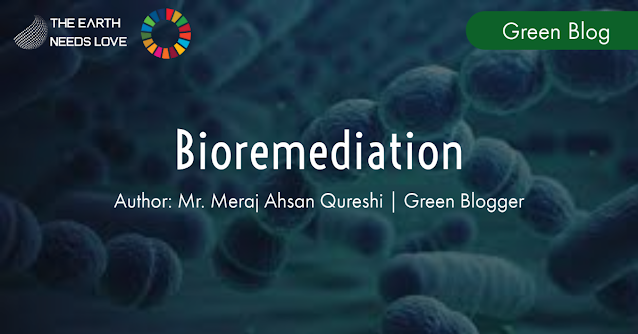Bioremediation is a process in which living organism remove
undesirable waste or unwanted things and further helps in restoring the
environment.
Earth has its
unique geographical features ranging from glaciers to deserts and every place
on the planet has its unique environment including microscopic bacteria and
enzymes. These microscopic organisms and enzymes help the process of
bioremediation process in order to achieve the goal of cleaning up the
environment which is produced through anthropogenic activities.
Bioremediation old
process that dates back centuries. Even the Romans used it to clean wastewater
back in 600 BC. As population was growing romans-built aqueducts, which are
basically channels, which collects wastewater from the city and further
collected. They constructed vast and cultured sewerage system, on which today’s
sewerage system are designed. After collection the wastewater it was allowed to
settle and further natural biodegradation was allowed through which clean water
was obtained. This technology was innovation in that era.
In Situ
vs Ex Situ
These both terms refer to the site
where the remediation is going to take place. As like in, In Situ treatment,
polluted soil water and any other source remain at the original and remediation
process is take place at the same location. This process is less costly as it
involves less labor as time saving as it does not require to remain at the site
for observing the remediation process. Further it is safe, as there is less
contact of labor force with the contaminants and hazardous content.
As in ex situ cleanup, contaminants or contaminated site is
excavated and moved to a place where every aspect can be monitored, nutrient levels,
the amount of oxygen present, temperature, and other necessary parameters.
Some of the examples of Ex-situ technique is as under:
Land Farming
It is a technique in
which contaminated site or the contaminates present in the are placed in the
specially lined tray and additional nutrients are added to the site to help
bacteria to break down the contaminants into simpler compounds. This technique
is used in oil spill areas mostly.
Bio Piling
It is a process in
which contaminated or hazardous material is stacked in such a way that it
allows to flow air through it, further it is allowed to remediate on its own.
Other intermediates like oxygen needed to increase the process of remediation.
Bio
Augmentation
Sometimes there is no
material or microbes available for degradation of the contaminants, for this
purpose we must add some time of microbes of same type of new types which have
more potential to degrade the material effectively and in less time or by
sometimes altering the environment.
Types
Of Bioremediations
Depending upon the type and size
of the contamination in the area and the available resources, bioremediation is
divided into different types.
Bioremediation
Microbes
Microbial bioremediation
is the most common type used for removal of contaminants, its fast and provide
easy solution for braking complex contaminants into simpler compounds.
Bioremediation
Plants
The type of
remediation process in which variety of plants are used to clean the
contaminated sites is known as phytoremediation. In this technique, plants draw
out toxic heavy metals and complex organic pollutants out of the soil, water
and also from the air. The complex contaminates after taking up from soil
stored into the plant tissues, absorbed there and further converted into
harmless substances and send back into the environment.
Bioremediation
Fungi
The use of fungi in
the removal of contamination is known as myco-remediation. It is typically done
in situ and is reserved for very specific circumstances. Fungi can survive in
environments with little to no moisture. They can also thrive in areas with
very high saturations of toxic substances.
Today
new research is being conducted to make the remediation process more effective
and give more productivity with less input. However, these techniques are being
used all over the world to convert contaminated sites into environment friendly
sites.
South
Africa: Use of Microorganism to clean mine water
In Cape Town, South Africa
scientist are using the power of microbes to treat contaminated wastewater
which is being produced from the coal mines. The region is filled with
abandoned gold and coal mines each having its own pollution problems in
surrounding areas. The chemicals like cynides seeping into the groundwater
which was causing harm to vegetation and wildlife of the surrounding area.
One of the renowned biologist Rob
Huddy identified a number of microorganisms present in current wastewater. He
inoculated 5 microorganisms and further tested them which were capable of
degrading complex pollutants. The next step that he takes is to figure out what
needs to be done so that the five key micro-organisms can flourish and do their
job optimally. Encouraging their growth is key to achieving the most thorough
way of making the mine water safe.
He is hopeful that by successfully
treating wastewater produced by mining, can help to not only protect the
surrounding environment, but also people and animals from harm. He can also
make it possible to provide a valuable source of clean water in a country that
is suffering from drought and water shortage.
About
the Author: Meraj Ahsan Qureshi is a young motivated, environment
health safety official and also social activist, who is determined to educate
and change the society through awareness and encourage other to be a part of
change.

0 Comments